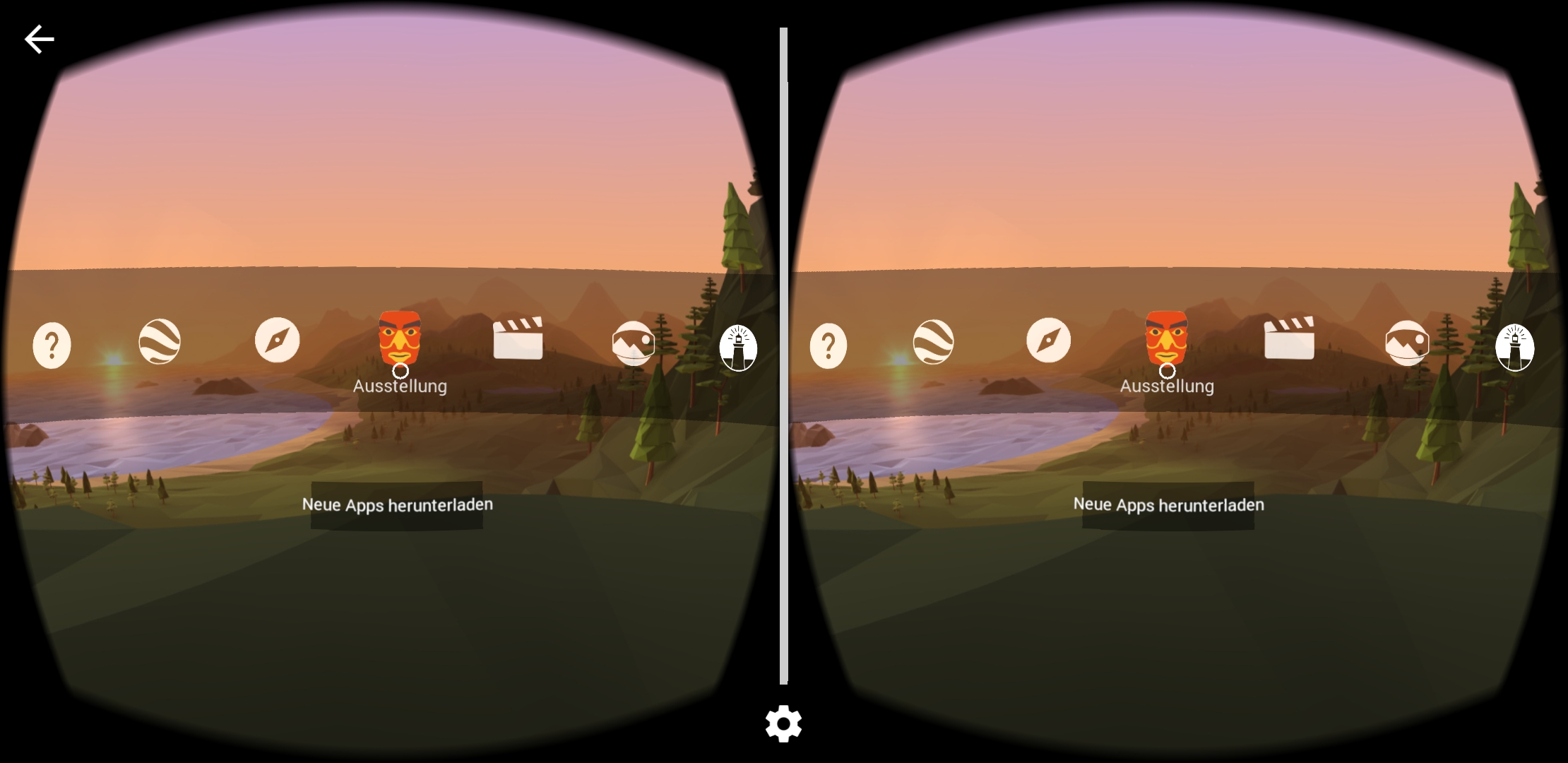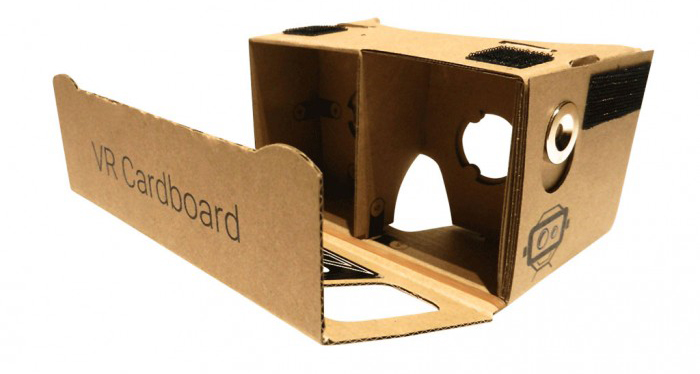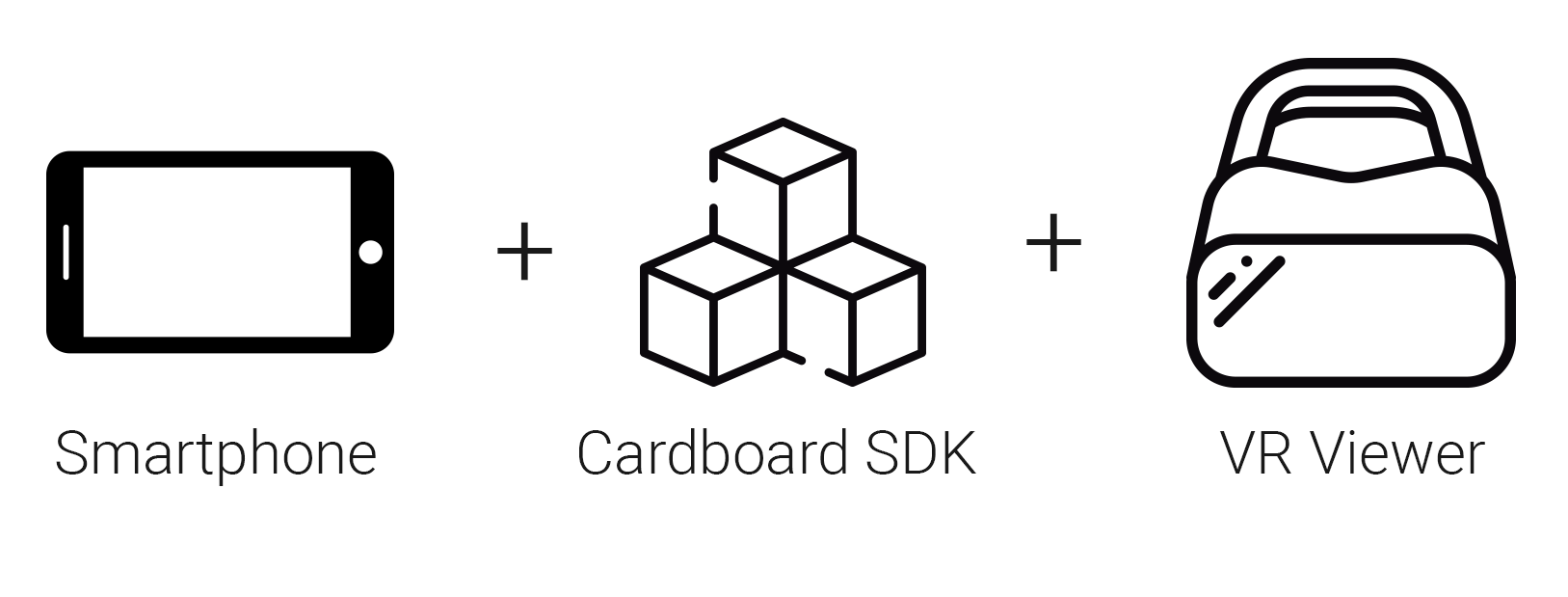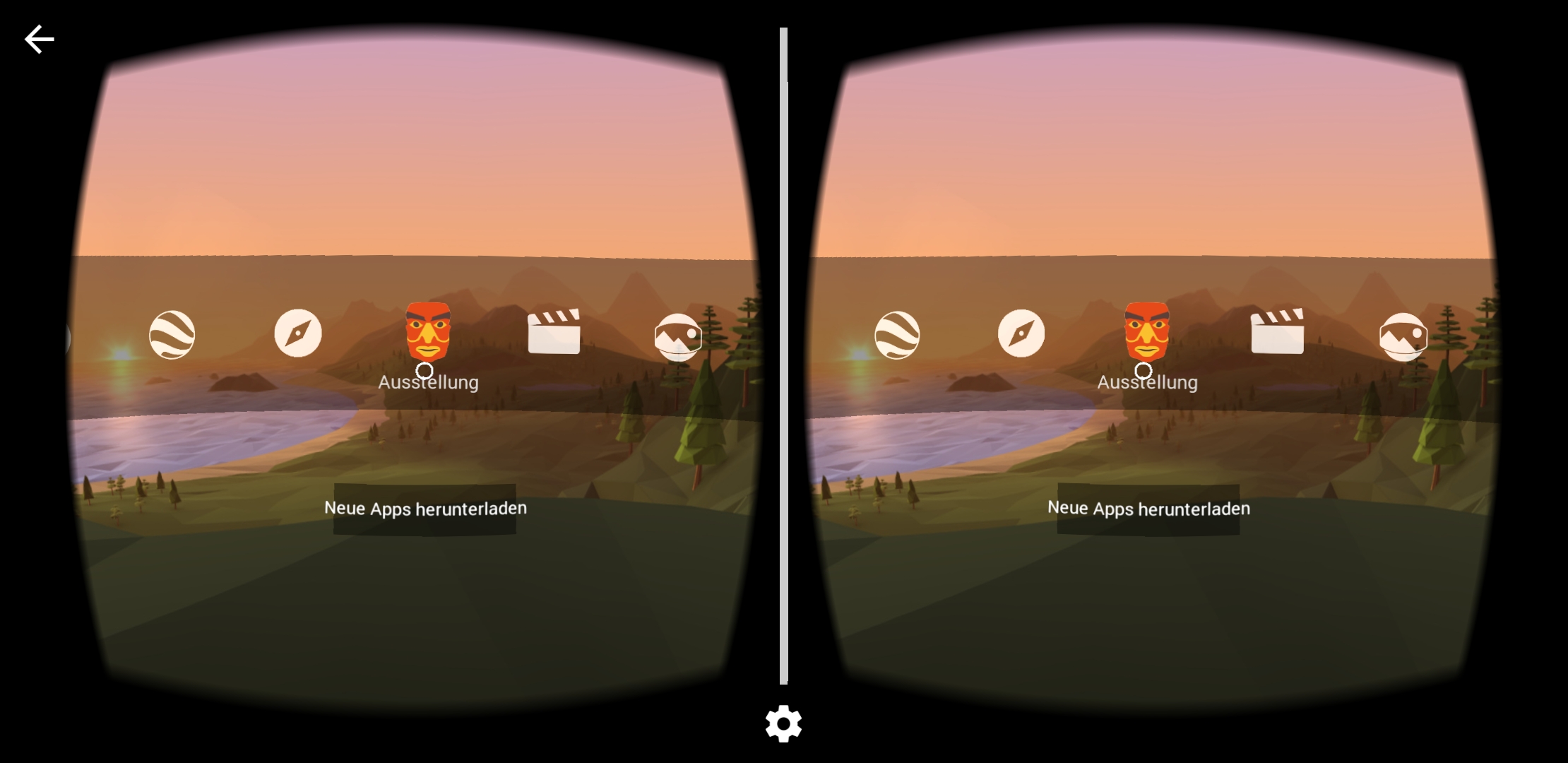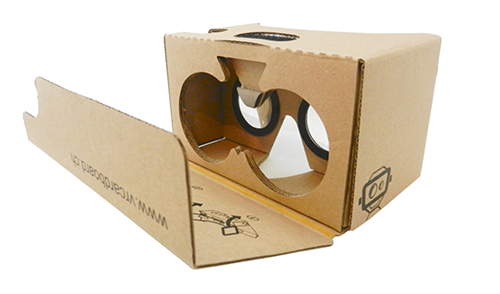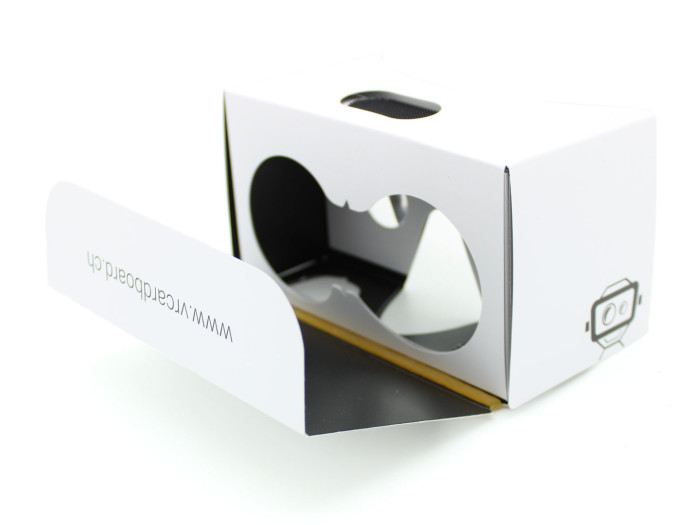About Google Cardboard
The Google Cardboard project comprises much more than just our VR Cardboard viewers. Learn more about the history behind the Google Cardboard and a little bit more about us.
How it all began
The Google Cardboard was officially introduced by Google at the I/O developer conference in 2014. It is a cardboard box that turns any smartphone into a pair of VR glasses. It was not the first project of its kind, as Durovis Dive had launched similar glasses on the market before that. The big difference was that Google’s aim with this project was to expand the reach of virtual reality. The affordable cardboard version and, above all, an additional SDK for developers ensured that an extremely large number of virtual reality apps were developed within a very short time. Today, we can attest to the importance of the Google Cardboard project and its great contribution to making virtual reality accessible to the general public. This is especially true because all blueprints for the Google Cardboard have been available free of charge since its very inception.
The go-ahead for the VR Cardboard
We were immediately taken with the project and saw the long-term potential of the Cardboards. The decision to produce our own VR glasses was made a short time later, when we realized that it was not easy to purchase high-quality Cardboards. In addition, the manual assembly using scissors and glue was “interesting,” to say the least.
The start of our production was sluggish as there were hardly any partners who wanted to get involved in this venture. Despite resistance, we managed to produce the first VR Cardboards of our very own that offered satisfactory quality and a great VR experience within a relatively short time. Within the first year we were able to create custom-printed versions for B2B customers.
How does a Google Cardboard work?
The Google Cardboard is effectively a mount for a smartphone with two built-in lenses. This mount, which is also called a viewer, allows you to view 3D or virtual reality content. All of the technology, e.g., the sensors and the screen, is provided by the smartphone. When you open apps developed with the Google Cardboard SDK, the smartphone automatically creates a stereoscopic view. This means that separate images are created for the right and left eye. Thanks to the smartphone’s gyroscope sensor, we can not only view 3D content but also look around. When we turn our head, the view rotates as if we were standing in the center of the virtual space. In addition, the content can, of course, be interactive, so that you can not only look around but also press a button, for example, to enter a new room or open a chest.
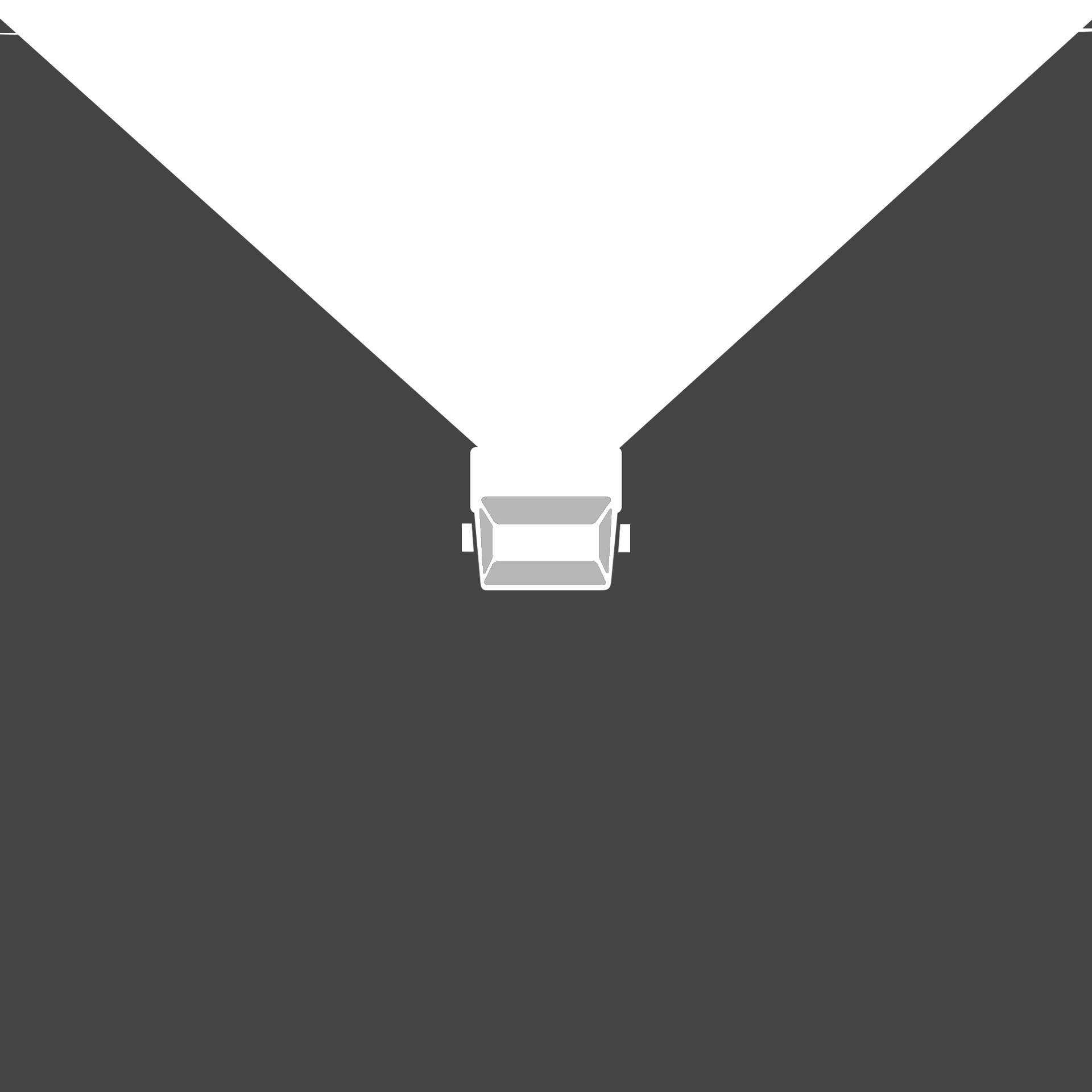
The Ecosystem
Strictly speaking, the Google Cardboard project consists not only of the viewers but also of two other components, all three of which together form the cornerstones of the Google Cardboard ecosystem. The project’s success can be largely attributed to the freely available SDK for developers, which was used to create all the apps that made the general public eager to play with virtual reality. The third component is the smartphone and its integrated technology.
VR Viewer
This is the mount for the smartphone, which allows viewing stereoscopic images thanks to its two convex lenses. VR viewers such as the Google Cardboard are not produced by Google itself, but by various partners like us. Google does not have an exclusive partner for producing viewers and the blueprints are publicly accessible.
Google Cardboard SDK
The Google Cardboard SDK is required by developers to create apps for the Google Cardboard ecosystem. Thanks to this SDK, the apps are able to create a stereoscopic image and optimize it so that it is displayed without distortion or curvature. Google continues to actively upgrade the SDK.
Smartphone
The smartphone is inserted into the viewer. It contains the necessary technology and sensors to generate a VR image and allows the user to look around in virtual space. A good smartphone for virtual reality applications must be fast, have a high resolution, and be equipped with a gyroscope sensor. Both Android and iOS smartphones are now supported.
The big update – 2015
The big update
In 2015, the Google Cardboard v2 was introduced – an improved version with an integrated button that replaced the magnet button used in the first version. The most important change, however, was the introduction of viewer profiles. Thanks to these, any VR glasses can now be made compatible with Google Cardboard apps. A viewer profile is used to store viewer data, so that the VR apps know how to adapt the image to ensure a sharp image that is not curved.
Certification
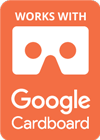 At the same time, the WWGC (Works with Google Cardboard) certification was introduced, which allows VR glasses to be certified for the Google Cardboard ecosystem. This type of quality control was intended to ensure that more high-quality viewers that provide users with a good VR experience are introduced to the market.
At the same time, the WWGC (Works with Google Cardboard) certification was introduced, which allows VR glasses to be certified for the Google Cardboard ecosystem. This type of quality control was intended to ensure that more high-quality viewers that provide users with a good VR experience are introduced to the market.
360° Videos
A new project was also introduced in the education sector. Google Expeditions brings virtual reality to the classroom. The project was a great success and is still ongoing today. With Curriculum21 and the Bring Your Own Device approach, this is certainly a new and interesting form of teaching that is worth exploring. In our opinion, it is only a matter of time before this method becomes available in Swiss classrooms.
Google Expeditions
Auch im Bildungsbereich wurde ein neues Projekt vorgestellt. Google Expeditions bringt neu Virutal Reality ins Klassenzimmer. Das Projekt war ein voller Erfolg und ist heute noch aktiv. Mit dem Lehrplan 21 und dem Bring your own Device Ansatz, ist dies sicherlich eine neue und interessante Unterrichtsform, welche genutzt werden kann. Unserer Meinung nach ist es nur eine Frage der Zeit bis diese auch bald in Schweizer Schulzimmern Einzug halten wird.
Viewer Profile
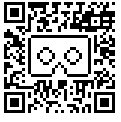 When importing a viewer profile, a perfect image is generated for the VR glasses being used. Each type of VR glasses has exactly one matching viewer profile. Switch between the two profiles to see the difference.
When importing a viewer profile, a perfect image is generated for the VR glasses being used. Each type of VR glasses has exactly one matching viewer profile. Switch between the two profiles to see the difference.
The Google Cardboard v2
The second version of the VR Cardboard is equipped with some great new features. We started the production of the new version as soon as the new specifications were released. The new version differs mainly in the following points.
New design
The new version is much sturdier and can be easily folded. Assembly is quicker and there is no gluing involved.
New lenses
The new version features larger 34 mm lenses. This allows for a larger visual field, which significantly improves the experience for all people, regardless of differences in interpupillary distances.
New button
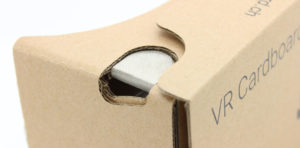 The magnet button has been replaced by a conductive button, which works with all smartphones and is the best option for performing interactions in apps.
The magnet button has been replaced by a conductive button, which works with all smartphones and is the best option for performing interactions in apps.
Daydream and acceptance in the B2B sector– 2016
Google Daydream
Google continued to promote virtual reality in 2016. A viewer that appeared to be, at first glance, of slightly better quality, was created under the project name Daydream. At closer look, however, revealed that the project used a completely new and unique ecosystem. The biggest difference is that Daydream can only be used with very specific smartphones. The new features, such as room tracking, and the controller require hardware that is no longer available in every smartphone. This is likely the reason why the Daydream project is not as well known.
Thus, in 2016, the Google Cardboard remained the easiest way to enjoy VR content. This was slowly but surely noticed by an increasing number of companies and there was quite a spike in the
All-in-one viewers and good content thanks to VR agencies – 2017
All-In-One
Google made a change to the Daydream project regarding virtual reality and is attempting to push the ecosystem via all-in-one devices. The devices are created in collaboration with external partners. The new devices are no longer inexpensive, since all of the technology must be integrated into the devices themselves. The first all-in-one device was launched by Lenovo. HTC was also promoted as a partner, but the corresponding device has not yet made it to market.
And what about Google Cardboards?
One cannot help but wonder: is the Google Cardboard project dead? No! In fact, the Google Cardboard SDK is still being actively upgraded, and more and more professional VR agencies have emerged over the last three years. VR development finally came of age in 2017 and the technology is slowly being used more actively by companies, especially for marketing and training purposes. The application is no longer limited to 360° videos. 3D rendering is also used and good native VR apps are no longer a rarity.
In addition, the Google 360° 3D camera, Jump, was further developed on the Q.T. with the new partner YI. If there is a Swiss agency which is already using this camera, please get in touch with us.
2018 – 3D 180° – Are we still needed?
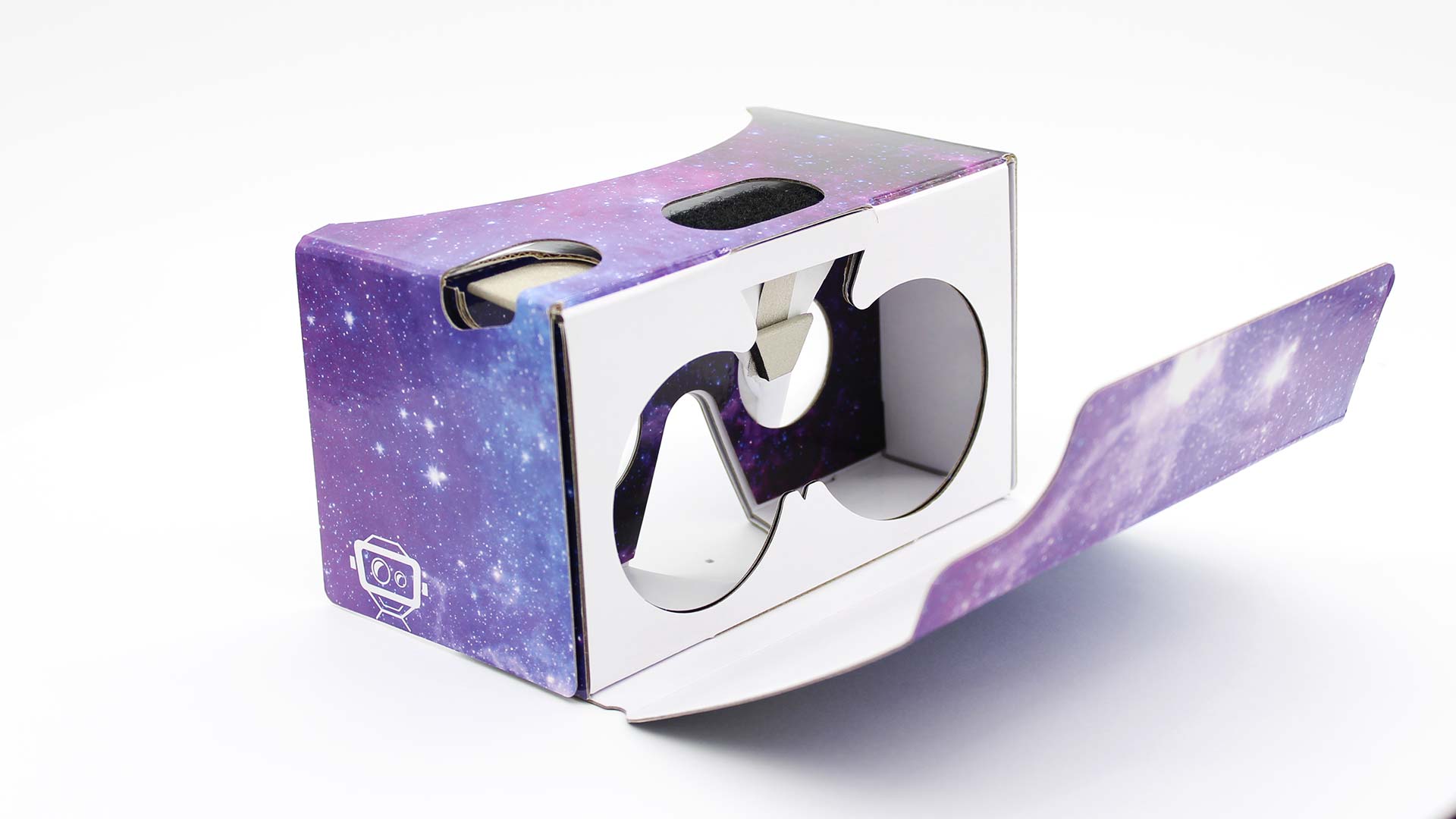
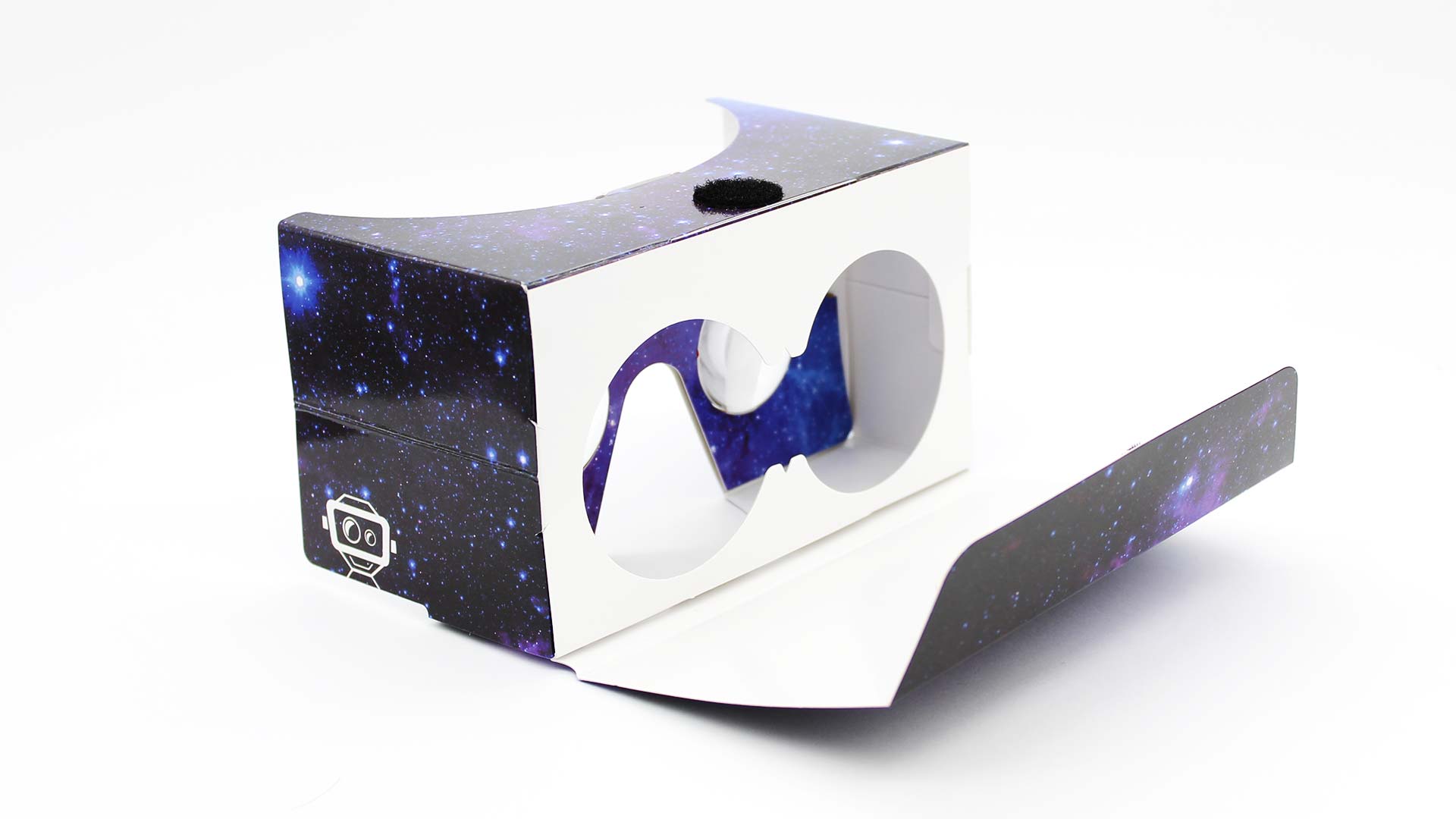
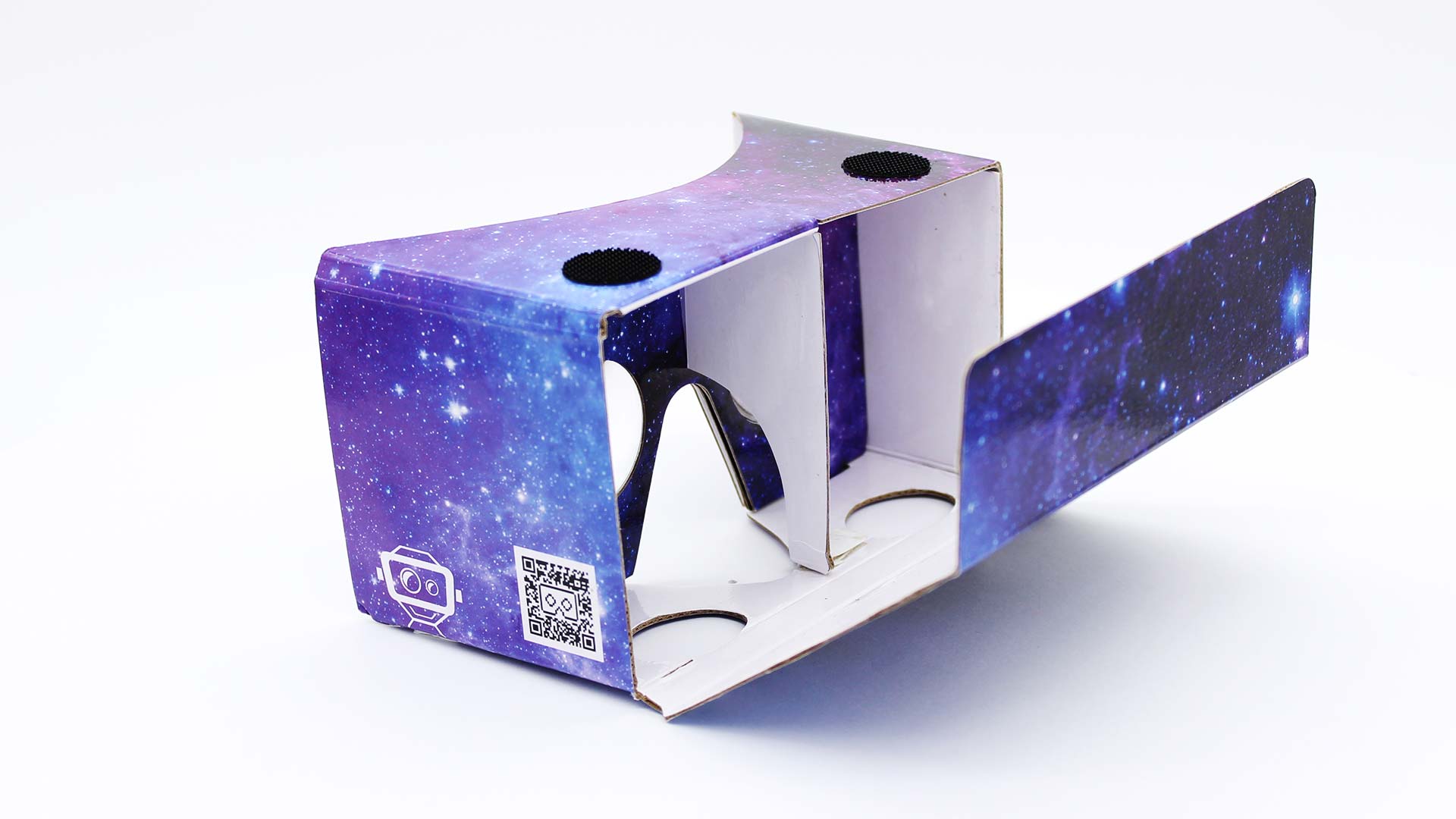
Bye 2D 360°, hello 3D 180°!
There was one change announced by Google in 2018 that pleased us very much. YouTube now also supports 180° 3D videos. The production of such videos is easier, they look better, and it makes even more sense to watch them using VR glasses. Of course, 360° videos are still supported, but it is worth taking a look at the new video format.
A lot has happened, despite the fact that there are no new groundbreaking announcements on the part of Google. More and more tools, especially in the visualization sector, offer an export function for VR glasses and rendering 3D visualization on the web is no longer a problem. Thanks to the widespread support of WebGL by web browsers, we can probably look forward to more complex VR web apps in the future.
What is the next step for us?
In 2018, we were troubled by an unpleasant question – are we still actually needed? We have examined the market and come to the conclusion that we are needed more than ever. Especially for the B2B sector, it is extremely important that all users have the best possible VR experience, no matter what Cardboard version they use. That is why we sat down and developed three new versions, each of which was designed particularly for a certain purpose, without compromising the VR experience in any way. The image is sharp and not curved, even if the end user does not import a viewer profile.
Yes, today we continue to create high-quality Cardboards in order to provide the best possible VR experience to as many users as possible. And so we are still here, for the same reason that we started in the first place – to offer you the perfect VR experience.

